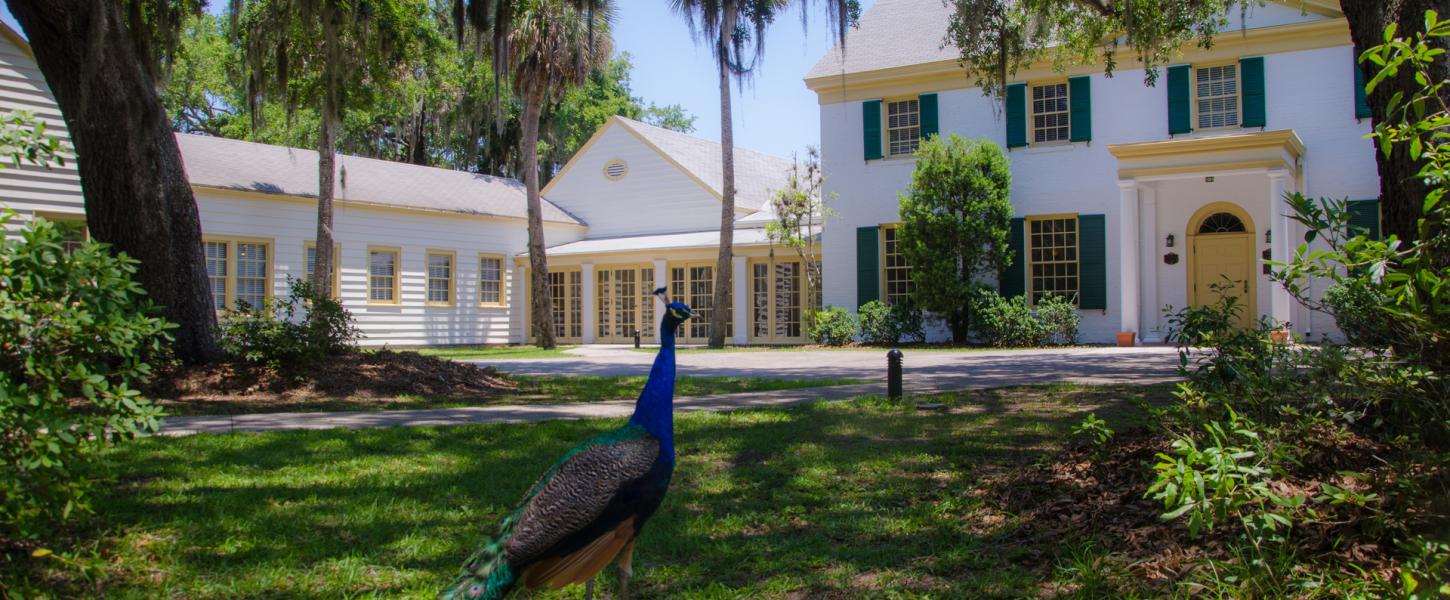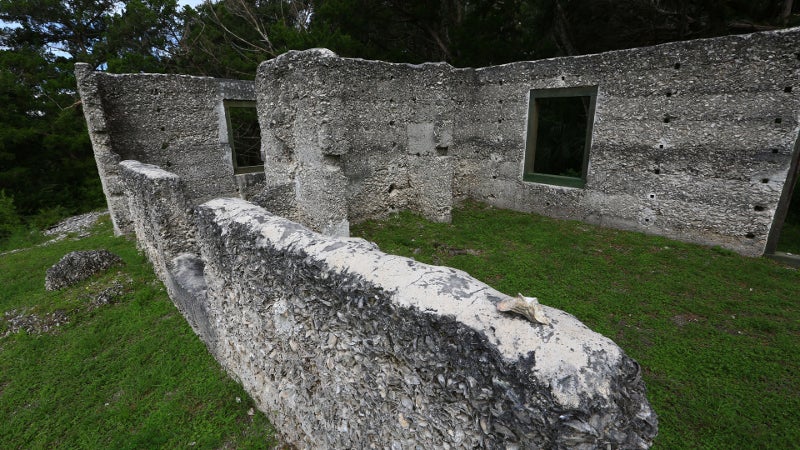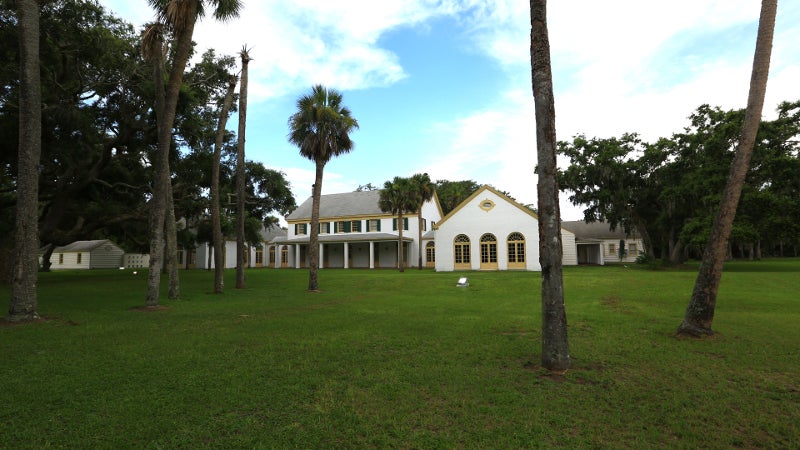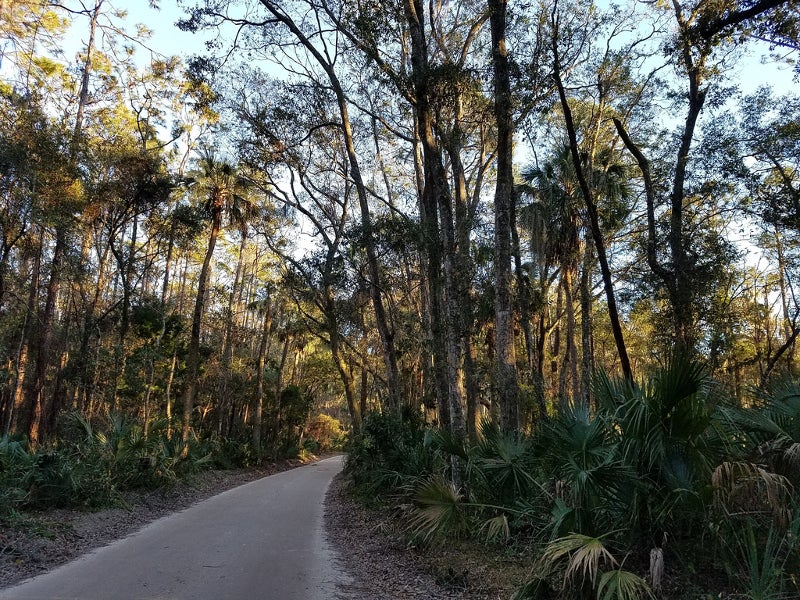Hike Through History at Fort George

Do the mysteries of the past intrigue you? Do you crave the story behind a place when you visit? Are you also thrilled by the idea of learning outdoors where you can combine education with exercise? If any of this appeals to you, plan your visit to Fort George Island Cultural State Park today, and you will not be disappointed.
Fort George Island is the southernmost Sea Island, a barrier island chain stretching from North Carolina to Florida. This island has harbored over 5,000 years of continuous human occupation, and taking a trip through the park can showcase a few of the stories that have taken place here.
Find the entrance to this intriguing park off of the historic A1A highway, just north of the St. Johns River Ferry. The stately brown welcome sign promises a two-for-one experience with both the National Park Service’s Kingsley Plantation and the state park’s Ribault Club.
Briefly follow Fort George Road before sighting the white tabby ruins of the Muncillna-McGundo House, a structure built in the 1800s.
Continue straight and travel to the Ribault Clubhouse under a majestic canopy. You will see evidence of the original Floridians, the Timucuans. Twisted roots of cedars and oaks grasp heaps of mounded oyster shells next to asphalt. These shell piles are known as middens, or refuse piles of shellfish - a main staple in the Timucuan diet and testament to past settlements here.
The stately Ribault Club emerges to the east with wide grassy lawns, colorful azaleas and romantic oaks complementing the green-shuttered, alabaster Neoclassic Revival building built in the 1920s. Park here and visit the Ribault Club, taking in the stunning architecture and the informative exhibits installed during its restoration in 2003.
From the Ribault Club, leave the car and get ready to move, taking the 3-mile Fairway Loop Trail. Head north to Mount Cornelia, an ancient dune that was once the tallest land feature on the eastern seaboard for miles. It is believed that the island’s namesake wooden fort honoring St. George the Dragon Slayer was built by the British atop this hill during the 1700s when they fought the Spanish for control of Florida. Continue to Point Isabel’s marsh vista north to the backside of Little and Big Talbot islands.
This fortified area was once a landing spot for vessels delivering goods to and from the plantation and the Fort George Hotel and Ribault Clubhouse.
Follow the old mule cart track running west that is now a 1/3-mile trail spur that leads to the Kingsley Plantation. The historic homestead is one of Florida’s oldest standing plantation-era structures, dating to the late 1700s.
Immerse yourself in the experience of Florida settlers including Zepheniah Kingsley, his African-American wife Anna and the enslaved communities that worked the farm. The tabby structures of the enslaved people still stand in a semi-circle at the site. Descriptive panels and an audio tour are provided while a staffed visitor center and library can give additional information.
Trek back to the Fairway Loop to continue your walk through time. Head southwest along a relic of the island’s recreation heyday, a clear open golf fairway. It now shows signs of nature’s takeover with young pine trees and yaupon holly staking their claim.
Cross over Fort George Road to continue south, stopping at the bench adjacent to a freshwater pond that is home to a night heron rookery and the occasional alligator. Circle back to the clubhouse and pass the old caddy shack where the groundskeeper resided during the resort’s peak popularity for wintering guests from the north.
You arrive back at your car, having burned calories, discovered much and spent a few hours walking through history. Still curious? Pick up an audio tour from the visitor center and learn even more during a two-hour guided driving tour from the comfort of your vehicle, and come back in the future for another visit to Fort George Island Cultural State Park!


